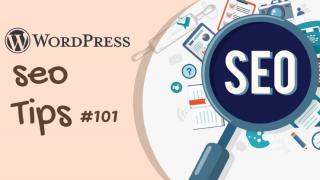Email marketing is the primary revenue driver for many organizations, but nonetheless, campaigns can often be suboptimal and lacking substance. Take a look at these easy hacks, and use them to take your conversion rates to the next level.
Email marketing is a mainstay of nearly every company’s marketing strategy. It provides an easy and personal way to directly reach out to one’s prospects and consumers, and it boasts high engagement rates relative to other marketing channels. Not only that, as a key revenue driver it often acts as the core of many companies’ demand engines – in fact, a recent study of B2B marketers found that 59% reported that email marketing was their most effective channel for revenue generation.
But despite the power of this channel, many marketers take email marketing for granted, and their conversion rates suffer as a result. Email marketing is easy to do, but can be challenging to execute consistently on a daily basis. Constantly improving content, tweaking messaging, and having the right targeting criteria are all critical to success, but the ingredients for success are more varied than just these. Fortunately, improving on this front is relatively straightforward – and easier than ever, given the number of powerful marketing automation tools on the market today.
Today, we’re going to take a look at some of the key steps you can take to increase your conversion rates on the email marketing front, and boost prospect engagement while you’re at it. Many of these are relatively simple hacks, but they can make a significant impact on everything from your conversion rates to your delivery metrics. Let’s get started.
Leverage segmented lists and layer in increased personalization

All too often, marketing organizations put together a fantastic email campaign and send it out to their entire audience. While this idea might sound great on the surface, it’s actually fraught with peril. No matter how compelling one’s email campaign might be, it’s not going to get a high conversion rate all the way through the funnel unless it’s both targeted and relevant.
Marketers can start on this journey by segmenting their customer and prospect lists into categories relevant to the verticals being sold to. For example, if one’s product has unique value propositions for both the finance and enterprise software industries, then it may be worth creating content tailored specifically to those industries. Segmentation can also apply to other areas as well (such as geographic location or revenue size), so aligning on segmentation criteria with one’s marketing and sales business partners is critical to success in this area.
Once segmentation criteria has been finalized, update your marketing automation platform and CRM to reflect these changes, and ensure that segmentation is tracked consistently throughout the entire customer lifecycle. If you’re just starting out, begin by segmenting on one or two variables, and increase your personalization slowly from there. Then it’s time to begin building out segmented content and map it to the customer journey where relevant.
Map content to the customer journey for maximum relevance
When it comes to conversion rates, content in context is everything. Not putting the right content in front of one’s prospects and customers at the right time is a sure recipe for low conversion rates, and improving this starts on the email marketing front. By mapping content to the customer journey and then deploying that content accordingly via email, brands and retailers can build their credibility with their prospects, while delivering value throughout the buying process.
Marketing organizations will do well to boost their conversion rates by first partnering with their sales organization to map out the entire customer journey. Once that’s done, parse through each step to identify which steps along the way can be leveraged to either drive urgency or slip in a call to action at a relevant time.
Being mindful of how each piece of content fits into one’s email and nurture campaigns may seem elementary, but it’s a step that all too many brands and retailers miss. Mapping content to the customer journey is a useful exercise that will ensure each email delivered to prospects is coming at a relevant time, and as an added bonus, it’ll likely boost collaboration between marketing and sales teams as well.
Use urgency to spark interest and demand
There’s nothing like a limited time offer to spark demand, and it’s often a great way to boost one’s conversion rates and move prospects through the funnel as quickly as possible. By inserting time-limited assets into one’s email marketing campaigns, brands and retailers can ensure that customers take action on their offers and begin embarking on the buyer’s journey.
Urgency can be applied to an email campaign through something as simple as a limited-time offer to download a marketing asset, or it can be as complex as a user generated content contest. Either way, introducing urgency to one’s email marketing campaign is absolutely critical to driving prospects towards your key call to action – while making it clear that the time to act on it is now.
Marketing automation practitioners can brainstorm with their marketing and sales counterparts on some truly creative solutions here. In recent months, we’ve seen everything from Basecamp reminding prospects how many other customers have signed up for their service, to Booking.com letting potential customers know how much time they have left to book certain hotel rooms at a promotional rate.
Don’t get too focused on conversion rates – because content is still king
This piece is all about increasing conversion rates, so why should you not focus on them too much? The short answer is that doing so can lead to “marketing myopia,” which is the inability to look beyond the metrics and see the conversion funnel for what it truly is a long-term customer journey.
One can endlessly do A/B testing of call-to-actions and subject lines, but if the true content of one’s email campaign isn’t incredibly compelling, those much-needed conversions just aren’t going to come. Spend time thinking about what your customers want, and then give it to them through your email marketing campaigns (while also giving them ample reason to purchase your paid products, whatever those may be).
Ensure your email strategy is truly cross-platform
If your marketing content is easily viewable across as many platforms as possible, it’ll naturally get accessed more frequently – and this naturally translates to higher conversion rates, as well as a positive impact on your bottom line.
Developing an email campaign tailored to desktop users is simple enough, but it’s not sufficient for today’s marketing landscape. Consumers are increasingly making their purchasing decisions on mobile devices, and marketers should follow their lead by creating compelling content that’s designed for mobile (or at the very least, uses responsive design principles).
To get started with implementing responsive, cross-platform design in your email campaigns, we’d recommend leveraging tools like Foundation (a responsive template builder) or Marketo’s native email template designer, both of which support responsive design and cross-platform testing.
In Summary…
Increasing email marketing conversion rates is a goal for many marketers, but it isn’t an end unto itself. Rather, high conversion rates should indicate that your organization is providing real, actionable value to its customers – and every organization’s marketing strategy should be aligned around that central goal.
Leveraging these strategies will ensure your marketing organization’s email campaigns are optimized for conversion, while delivering value to your customers and prospects alike at the same time.





